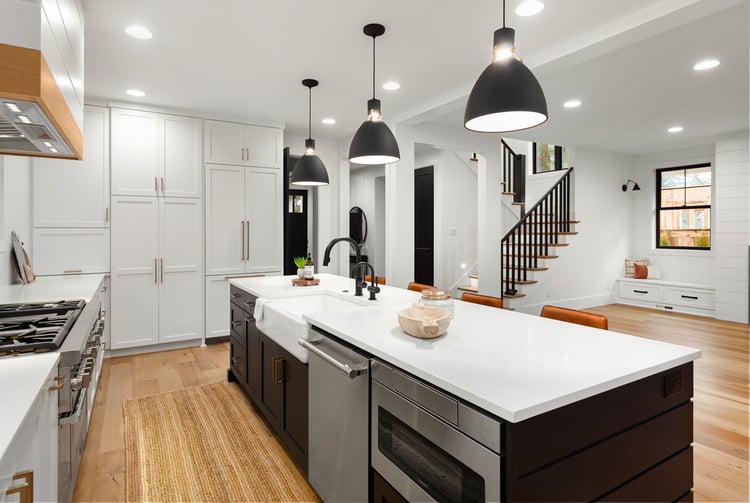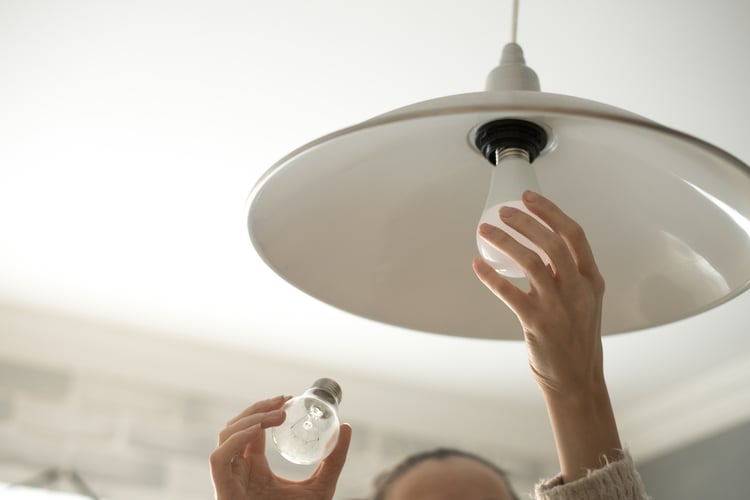US Energy Information Administration: 47% of Homes Use LED Lighting

LED lighting is no longer an emerging technology: Homeowners and business managers are aware of its superior efficiency and durability. The latest Residential Energy Consumption Survey from the Energy Information Administration reveals that 47% of US homes now use LED products for most or all of their lighting needs. Residential LED lighting now has a larger market share than halogen, incandescent and fluorescent lighting.
The Residential Energy Consumption Survey is a periodic study carried out by the EIA, which provides a detailed picture of how US households are using energy. The last two surveys were carried out in 2015 and 2020, and the latest survey considered 18,496 households. The EIA started publishing the 2020 results in March 2022, since analyzing the sheer volume of data takes time. Between 2015 and 2020, the percentage of US homes using LED lamps for most or all of their lighting needs increased from 4% to 47%.
Get a professional LED lighting design for your next construction or renovation project.
The two main benefits of LED lighting are energy efficiency and durability. On average, LEDs can achieve electricity savings of 30-50% when replacing fluorescent bulbs, and savings of over 80% when replacing halogen or incandescent lamps. The typical LED bulb lasts around 15,000-25,000 hours, depending on the model and manufacturer, while most CFLs are rated for around 8,000-12,000 hours. Halogen and incandescent lamps normally need a replacement in 1,000-2,000 hours.
LED lighting also offers a design flexibility that cannot be achieved with other lamp types. Thanks to their small size, LEDs can be used in lamp shapes that are not possible with halogen and fluorescent bulbs. LEDs can also be designed to produce any light color needed for an interior design, and some products have an adjustable color output.
What Lamp Types Are Used in US Households?
When comparing the results of the 2015 and 2020 Residential Energy Consumption Surveys, the US EIA observed widespread adoption of LED lighting, while the market share of older technologies has declined. The following table compares the finding of the last two surveys:
|
Type of Light Bulb |
2015 Survey Results |
2020 Survey Results |
|
LED |
4% of homes |
47% of homes |
|
Incandescent or Halogen |
31% of homes |
15% of homes |
|
Compact Fluorescent |
32% of homes |
12% of homes |
|
No predominant lamp type |
33% of homes |
26% of homes |
Incandescent, halogen and fluorescent lamps dominated the residential market back in 2015, as you can see in the table above. LED was still an emerging technology, with only 4% of homes using it as their main lighting option. This changed drastically in only five years, and LED has become the most used lamp type in 47% of homes. The percentage of homes using incandescent, halogen and CFL lamps has dropped by more than half during the same time.
The US EIA also observed that LED lighting adoption is also influenced by household characteristics, and the following are some of their main findings:
- LED is the dominant lighting technology in 52% of homes without children, and 45% of homes with at least one child.
- 54% of households with an income above $100,000 use LED as their main option, but only 39% of households making less than $20,000.
- 50% of owner-occupied homes use mostly LED lighting, but only 40% of renter-occupied homes.
Lighting Usage Habits of US Households

The EIA not only analyzed the lamp types in US homes, but also how they are used. As part of the Residential Energy Consumption Survey, they estimated the percentage of homes with three or more light bulbs that are used at least four hours per day:
- 59% of households without children, 68% of households with at least one child
- 71% of households making over $100,000, 52% of households making less than $20,000
- 65% of owner-occupied homes, 52% of rented-occupied homes
LED lighting can achieve synergy with automatic controls, and home automation is on the rise according to EIA data. They have estimated that 39 million American homes have smart speakers, and 10 million homes use them to control lighting. The latest Residential Energy Consumption Survey was completed between 2020 and 2021, and the sample of 18,496 homes is the largest since the EIA started the program. The survey provides an accurate picture of how homes are using energy, and this is valuable information for homeowners and developers alike.
Upgrading to LED Lighting

Homeowners and companies who are considering an LED upgrade have three main options: relamping their fixtures, retrofitting, or replacing them completely.
A relamp is the quickest and least expensive option. Existing lamps are replaced with equivalent LEDs, which are designed for the same sockets and voltages. However, this means ballasts are left connected, and you will not achieve the highest possible efficiency because they consume power. Also, some LED replacement lamps will not achieve an optimal lighting distribution in older fixtures.
A retrofit also uses the existing fixtures, but they are rewired internally for optimal performance with LEDs. For example, ballasts used by older lamp types are bypassed, or replaced with more efficient drivers or electronic ballasts.
Finally, a complete fixture replacement is the most expensive option, but you achieve the highest possible efficiency and performance. Upgrading to integrated LED fixtures is a great option if you’re planning a major renovation.

Michael Tobias
Michael Tobias, the Founding Principal of NY Engineers, currently leads a team of 150+ MEP/FP engineers and has led over 4,000 projects in the US
Join 15,000+ Fellow Architects and Contractors
Get expert engineering tips straight to your inbox. Subscribe to the NY Engineers Blog below.

